[Editor’s Note: The current administration has called upon the U.S. “to lean forward, not shrink back” in addressing the “deepening climate emergency.” In his Interim National Security Strategic Guidance, issued last month, President Joseph R. Biden states,
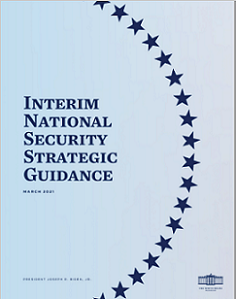 “The climate crisis has been centuries in the making, and even with aggressive action, the United States and the world will experience increasing weather extremes and environmental stress in the years ahead. But, if we fail to act now, we will miss our last opportunity to avert the most dire consequences of climate change for the health of our people, our economy, our security, and our planet.”
“The climate crisis has been centuries in the making, and even with aggressive action, the United States and the world will experience increasing weather extremes and environmental stress in the years ahead. But, if we fail to act now, we will miss our last opportunity to avert the most dire consequences of climate change for the health of our people, our economy, our security, and our planet.”
The U.S. Army has been tracking the impacts of climate change on the Operational Environment. Per TRADOC Pamphlet 525-92, The Operational Environment and the Changing Character of Warfare, climate change:
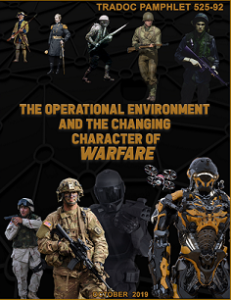 “… likely will become a direct security threat. Risks to U.S. security include extreme weather impacting installations, increased resource scarcity and food insecurity, climate migration increasing the number of refugees and internally displaced people`s, and the Arctic as a new sphere of competition. The addition of over seven billion people over the last century has altered geography itself, and cities now sprawl over large areas of the globe and contain almost two-thirds of the world’s population.“
“… likely will become a direct security threat. Risks to U.S. security include extreme weather impacting installations, increased resource scarcity and food insecurity, climate migration increasing the number of refugees and internally displaced people`s, and the Arctic as a new sphere of competition. The addition of over seven billion people over the last century has altered geography itself, and cities now sprawl over large areas of the globe and contain almost two-thirds of the world’s population.“
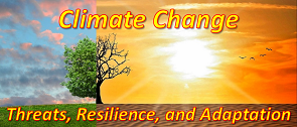 Today’s Mad Scientist Laboratory blog post serves as a prelude for our Climate Change – Threats, Resilience, and Adaptation webinar next Tuesday, 13 April 2021 (1430-1600 EDT) — if you haven’t registered yet to attend, do so NOW by clicking here [via a non-DoD network]. This event will feature a panel of experts from across academia and the Government exploring the multifarious impacts of climate change on policy, threats, resilience, mitigation, and adaptations. The webinar will help discern and expound on the U.S. Army’s role in combating climate change and explore how it will conduct operations while being challenged by climate change impacts in the Operational Environment. Read on to whet your appetite on this timely critical topic!]
Today’s Mad Scientist Laboratory blog post serves as a prelude for our Climate Change – Threats, Resilience, and Adaptation webinar next Tuesday, 13 April 2021 (1430-1600 EDT) — if you haven’t registered yet to attend, do so NOW by clicking here [via a non-DoD network]. This event will feature a panel of experts from across academia and the Government exploring the multifarious impacts of climate change on policy, threats, resilience, mitigation, and adaptations. The webinar will help discern and expound on the U.S. Army’s role in combating climate change and explore how it will conduct operations while being challenged by climate change impacts in the Operational Environment. Read on to whet your appetite on this timely critical topic!]
Climate change will increase the likelihood of conflict, create unprecedented national security challenges, and jeopardize military readiness. Climate change has the power which no nation-state, actor, or issue currently  possesses: the ability to concurrently threaten all life on earth, destabilize the global economy, and upend the global world order. These facts make climate change the single greatest risk to the United States military in the twenty-first century. Climate change will increase the likelihood and severity of war, create unprecedented national security challenges, and jeopardize military readiness. Mad Scientist has gleaned seven key insights from previously published blog posts addressing how this “deepening climate emergency” will affect the Operational Environment and challenge the U.S. Army.
possesses: the ability to concurrently threaten all life on earth, destabilize the global economy, and upend the global world order. These facts make climate change the single greatest risk to the United States military in the twenty-first century. Climate change will increase the likelihood and severity of war, create unprecedented national security challenges, and jeopardize military readiness. Mad Scientist has gleaned seven key insights from previously published blog posts addressing how this “deepening climate emergency” will affect the Operational Environment and challenge the U.S. Army.
1. Increased Conflict Potential
Soaring temperatures will raise the risk of armed conflict was the finding in an analysis published in Nature in June 2019. Experts found that climate is affecting armed conflict within countries, in addition to other contributing factors, such as low development and limited state capabilities. As global temperatures rise, the relationship between heat and conflict becomes more profound. If temperatures rise by 2 degrees Celsius, there is a 13% increase in the risk of armed conflict. That increase rises to 26% if temperatures increase by 4 degrees Celsius. This is because climate change, to coin a term from the Global Peace Index report, acts as a “threat multiplier.” While climate change doesn’t automatically lead to higher levels of violence, the Global Peace Index described it best as its ability to exacerbate security threats when they stated that “climate pressures adversely impact resource availability, affect population dynamics, and strain societal institutions, which directly affects security and stability.”

The ongoing Syrian Civil War is the most pressing example of conflict influenced by climate change. Drought lead to decreased food stores which, in combination with other factors, undermined the legitimacy of the Syrian government. Syria then collapsed into civil war, quickly drawing the United States and Russia onto opposing sides. As resources were committed, the war expanded, resulting in the Syrian government using chemical weapons against their own citizens. This conflict did not start because of climate change, but climate change in combination with other factors lead to high levels of violence. In the future, the changing climate will intensify and exacerbate the effects of other political and economic tensions.
Check out “The Heat is On” in “The Queue” Redux!; Climate Change as a Threat Multiplier: Part 1, by LTCOL Nathan Pierpoint, Australian Army; and Climate Change: Destroyer of World, by CPT Kyle Hallowell, U.S. Army.
2. Catalyst for Terrorism
As the impact of climate change grows ever more severe in the developing world, it could prompt more direct climate-change inspired terrorism. This is especially likely given that the populations of developing nations are increasingly connected to the international information infrastructure – allowing more widespread comprehension of climate change as a global phenomenon with roots in western nations.
 If radical Islamic terrorists can harness climate change grievance, then the threat they offer against western interests increases substantially. The audience for radical, violent Islamic teaching is very small, and much of it is in the Middle East. The audience for climate grievance is far larger — 70% of Americans aged 18-34 worry a great deal or a fair amount about climate change — and global. This is obviously not to suggest that all climate change activists or people concerned about it are putative terrorists.
If radical Islamic terrorists can harness climate change grievance, then the threat they offer against western interests increases substantially. The audience for radical, violent Islamic teaching is very small, and much of it is in the Middle East. The audience for climate grievance is far larger — 70% of Americans aged 18-34 worry a great deal or a fair amount about climate change — and global. This is obviously not to suggest that all climate change activists or people concerned about it are putative terrorists.
However, if even 1 in a 1000 of that American number were willing to take more robust action – such as giving support to terrorists, or even carrying out attacks themselves – it would comprise a support base of approximately 47,200 people. That presents a significant threat, only made worse by the perceived ‘moral fairness’ of climate terrorism — attacking the U.S. for vague oppression of Muslims plays differently in media and politics than attacking the U.S. because of its very real role as one of the world’s largest polluters.
Check out Future Threats: Climate Change and Islamic Terror, by Matthew Ader.
3. Mass Migration
Climate change and mass migration are the conflict drivers of most concern, as learned from our Global Perspectives in the Operational Environment Virtual Conference on 29 January 2020. Human migration as a consequence of climate change will create new security concerns for impacted countries as well as neighboring regions and, due to European geography, seemed to be of greater concern than our focus on great power conflict. Indeed, mass migration events may threaten regional stability, undermine governments, and strain U.S. military and civilian responses.
In the fastest growing megacity in the world according to the U.N., Bangladesh’s capital Dhaka has seen mass migration into the city’s slums. According to the latest census conducted by the Bangladesh Bureau of Statistics (BBS) in 2015, 2.23 million people live in slums across the country. Eighty-one percent of migrants cited a climate-related cause as a main reason for their move, with most of those relocating to cities to earn their livelihood after losing their land and houses to river erosion. High levels of resource scarcity and strained public resources contributed to violence in these slums, with climate refugees intensifying already present social stress.
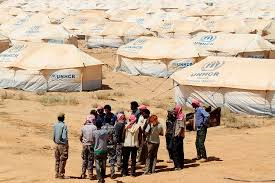
Bangladesh is not the only country facing mass migration due to the adverse effects of climate change. A recent New York Times article also highlighted the stark reality of population migration and displacement across the world. According to the article, the United Nations Refugee Agency stated that the global population of people displaced reached 70.8 million, up from 43 million a decade ago, 26 million fled across borders, and 3.5 million were seeking asylum in third countries. Evidence suggests that people living in less developed countries without the ability to mitigate these problems are those most likely to migrate, and that this migration has been a significant factor in increased violence in receiving areas.
Check out: Takeaways from the Mad Scientist Global Perspectives in the Operational Environment Virtual Conference; Emergent Global Trends Impacting on the Future Operational Environment; and Climate Change as a Threat Multiplier: Part 1, by LTCOL Nathan Pierpoint, Australian Army.
4. Spread of Infectious Diseases
New and evolving diseases from the natural environment — exacerbated by changes in climate, the movement of people into cities, and global trade and travel — may cause pandemics. A number of infectious diseases, such as malaria, West Nile virus, cholera, and Lyme disease, are expected to worsen as climate change continues to raise global temperatures and cause more extreme weather. 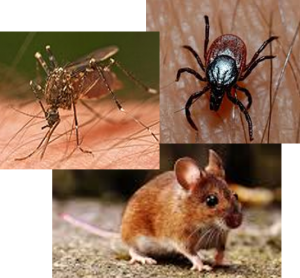 Higher temperatures and precipitation will increase the life expectancy and range for vectors such as mosquitos, ticks, and rodents. Poor global health infrastructure will only amplify the spread of these and other diseases, as increasing global connectivity and changing environmental conditions change the geographic distribution of pathogens and their hosts.
Higher temperatures and precipitation will increase the life expectancy and range for vectors such as mosquitos, ticks, and rodents. Poor global health infrastructure will only amplify the spread of these and other diseases, as increasing global connectivity and changing environmental conditions change the geographic distribution of pathogens and their hosts.
Melting permafrost in the Arctic is releasing diseases that we have not encountered in hundreds or even thousands of years. Permafrost acts as an excellent preserver of bacteria and viruses due to the lack of oxygen and light, and global warming is slowly exposing older layers of permafrost. In 2016, thawing permafrost in northern Siberia melted to reveal a reindeer carcass that had been infected with anthrax, leading to dozens of hospitalizations and the death of a 12-year-old boy, as well as over 2,300 reindeer. The warming climate, facilitating the release of old diseases and expanding the ranges of disease vectors, portends a deadly future.
Check out Emergent Global Trends Impacting on the Future Operational Environment; and Climate Change Laid Bare: Why We Need To Act Now, by Sage Miller.
5. Critical Water Shortages
Increased water scarcity may lead to conflict that could require U.S. Army intervention. While armed conflict rarely starts solely over water, water has been acknowledged as a contributing factor in conflict, and has been repeatedly weaponized or targeted as a tool of warfare. Data collected from the Pacific Institute demonstrates that the use of water as a trigger, weapon, or target in warfare has been increasing, and has even been targeted by non-state actors.

Twelve out of 17 of the most water-stressed countries are located in the Middle East and North Africa. India also faces significant water challenges, ranking 13th for water stress with “more than three times the population of the other 17 extremely highly stressed countries combined.” By 2030, water demand in India will be double the supply, and severe water scarcity could cause a 6% loss in GDP. Should governance and environmental management not adequately address these problems, these countries could face a massive exodus, straining humanitarian assistance in MENA and Southeast Asia. This type of crisis would increase regional instability, threaten U.S. Army missions overseas, and could strain DoD resources by requiring more water-related humanitarian assistance abroad.
Check out Emergent Global Trends Impacting on the Future Operational Environment; and Water: A Fluid Challenge for the Future, by proclaimed Mad Scientist Caroline Duckworth.
6. Creating New Zones of Competition
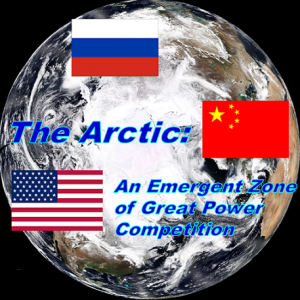 Climate change is opening up the Arctic, making it a new zone of strategic competition. Both Russia and China have staked claims to undersea territories and have expanded their operational capacities above the Arctic Circle to control the extensive untapped reserves of oil, natural gas, and rare earth minerals as well as opportunities for transpolar shipping. Controlling the Arctic, especially by maintaining a strong naval presence, is a strategic priority.
Climate change is opening up the Arctic, making it a new zone of strategic competition. Both Russia and China have staked claims to undersea territories and have expanded their operational capacities above the Arctic Circle to control the extensive untapped reserves of oil, natural gas, and rare earth minerals as well as opportunities for transpolar shipping. Controlling the Arctic, especially by maintaining a strong naval presence, is a strategic priority.
Russia’s Northern Fleet operates over twenty times more icebreakers than the United States, and it is actively training in the Arctic, especially in the winter. The Russian Army performed a high-altitude precision Arctic jump, demonstrating an ability yet unseen by any other Arctic nation. Meanwhile, Russia’s Advanced Research Foundation is developing UAVs specifically optimized for Arctic use.
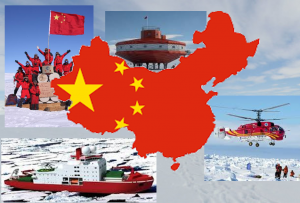 China is looking to expand their Arctic presence by adding a heavy icebreaker to complement their current fleet of two medium icebreakers. Further, China has already worked to increase its communications capabilities in the polar regions with their own polar satellites. With the polar ice cap melting, it stands to reason that these efforts will only intensify and so too must the United States’ efforts. After all, lessons learned for Arctic operations could give the United States an advantage when the Antarctic Treaty expires in 2048 and that continent becomes a new contested frozen territory.
China is looking to expand their Arctic presence by adding a heavy icebreaker to complement their current fleet of two medium icebreakers. Further, China has already worked to increase its communications capabilities in the polar regions with their own polar satellites. With the polar ice cap melting, it stands to reason that these efforts will only intensify and so too must the United States’ efforts. After all, lessons learned for Arctic operations could give the United States an advantage when the Antarctic Treaty expires in 2048 and that continent becomes a new contested frozen territory.
Check out Our Arctic—The World’s Pink Flamingo and Black Swan Bird Sanctuary, by Frank Prautzsch; The Arctic: An Emergent Zone of Great Power Competition; and On Thin Ice…, by proclaimed Mad Scientist Seth Gnesin.
7. Adverse Effects on the U.S. Army
Climate change poses significant non-conflict implications for the U.S. Army as well, including desertification, drought, and wildfires. Increased incidences of wildfires and desertification limit the availability of land for training,  adversely impacting units’ readiness and driving up programming requirements for the Army’s Integrated Training Area Management (ITAM) Program. The risk of wildfires has led to the conservative use of live fire training ranges, resulting in decreased weapons proficiency. Fires also threaten ranges and maneuver training areas that rely on both terrain and instrumentation to emulate battlefield conditions.
adversely impacting units’ readiness and driving up programming requirements for the Army’s Integrated Training Area Management (ITAM) Program. The risk of wildfires has led to the conservative use of live fire training ranges, resulting in decreased weapons proficiency. Fires also threaten ranges and maneuver training areas that rely on both terrain and instrumentation to emulate battlefield conditions.

Additionally, the Army will be increasingly called upon to provide humanitarian assistance for our border security forces to handle the increased migration of populations from Central America and beyond, displaced by the effects of climate change. These operations will be conducted in an environment with the potential for increased heat casualties among our Soldiers and the need to transport water to the battlefield for use by the force and for humanitarian purposes. Consequently, the Army must continue to build resiliency across the force to mitigate the effects of climate change.
Check out “The Heat is On” in “The Queue” Redux!; Climate Change as a Threat Multiplier: Part 1, by LTCOL Nathan Pierpoint, Australian Army; Climate Change: Destroyer of World, by CPT Kyle Hallowell, U.S. Army; and Water: A Fluid Challenge for the Future, by proclaimed Mad Scientist Caroline Duckworth.
>>>> REMINDER: Be sure to register for our Climate Change – Threats, Resilience, and Adaptation webinar, next Tuesday, 13 April 2021 (1430-1600 EDT). Join our panelists:
-
-
- Dr. Elizabeth Chalecki, Associate Professor of International Relations, University of Nebraska – Omaha, and Wilson Fellow, Woodrow Wilson International Center for Scholars
-
-
-
- Dr. Anne Marie Baylouny, Associate Professor of National Security Affairs, Naval Postgraduate School
-
-
-
- Damarys Acevedo-Mackey, Environmental Engineer, U.S. Army Corps of Engineers
-
-
-
- Devabhaktuni “Sri” Srikrishna, Founder, PatientKnowhow.com
-
- … as they present their unique perspectives regarding Climate Change’s impact on the Operational Environment and the associated implications for the U.S. Army, and then answer questions from registered participants.
Check out this event’s 5W’s here, and then register here [via a non-DoD network] to participate in this informative event!
On 29 April 2021, we will release a Mad Scientist The Convergence podcast with Mr. Richard G. Kidd IV, Deputy Assistant Secretary of Defense for Environment and Energy Resilience at United States Department of Defense, addressing the climate change resiliency challenges and opportunities facing the Department of Defense, and the U.S. Army in particular. Stay tuned to the Mad Scientist Laboratory!



